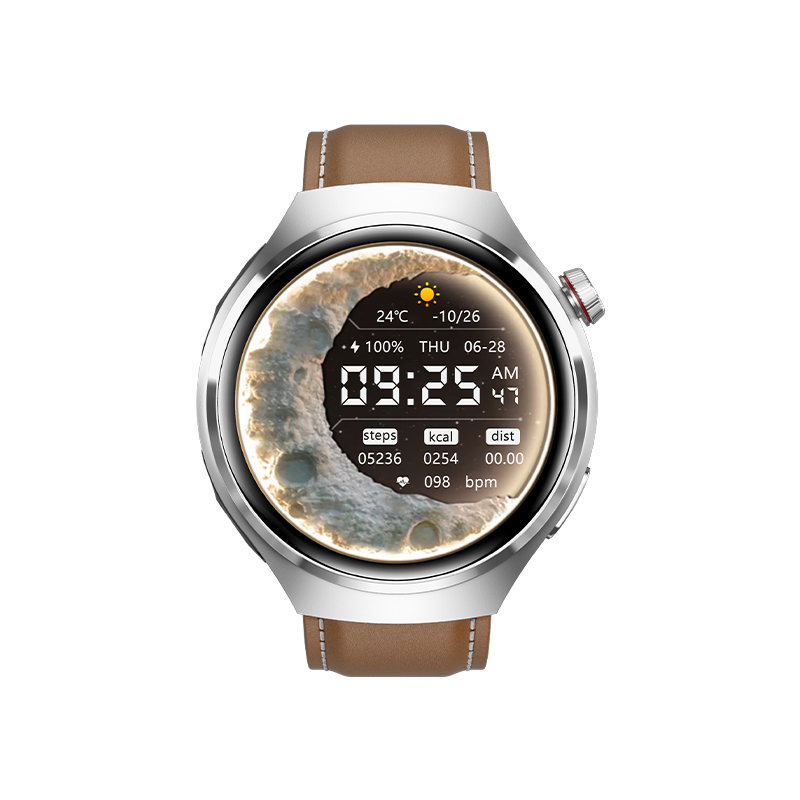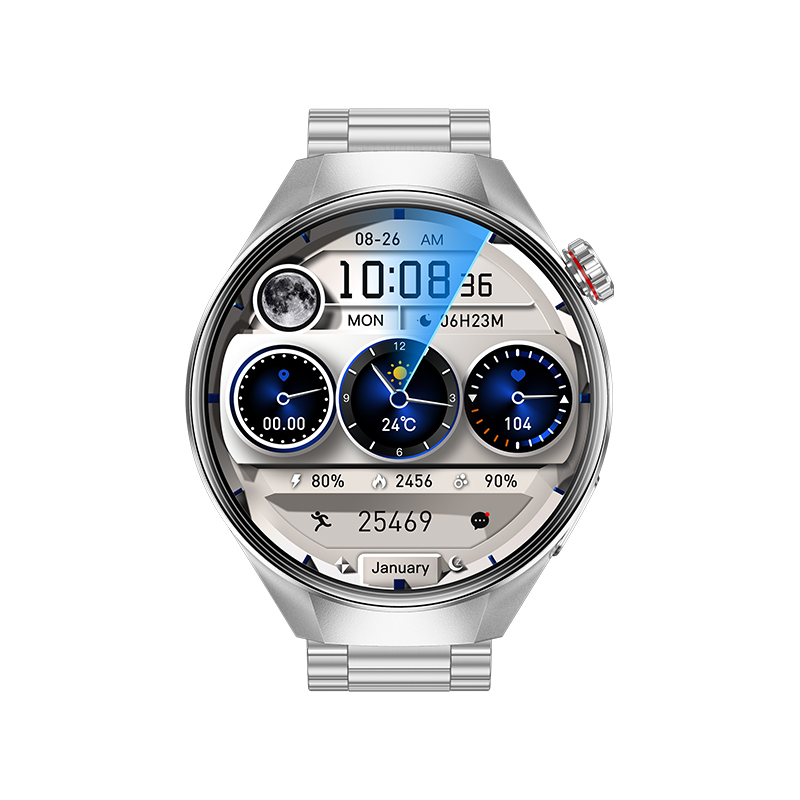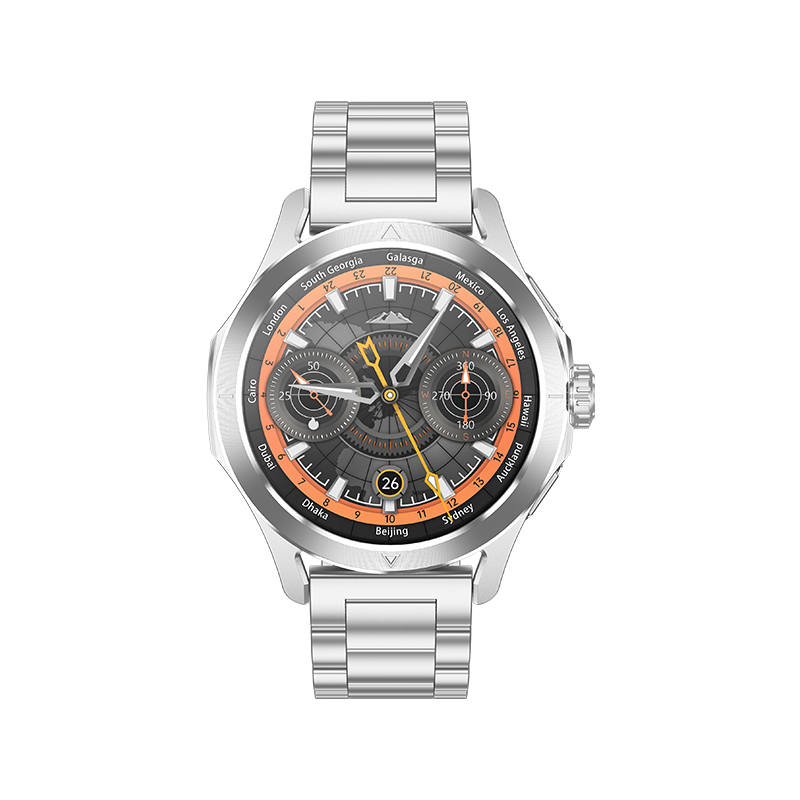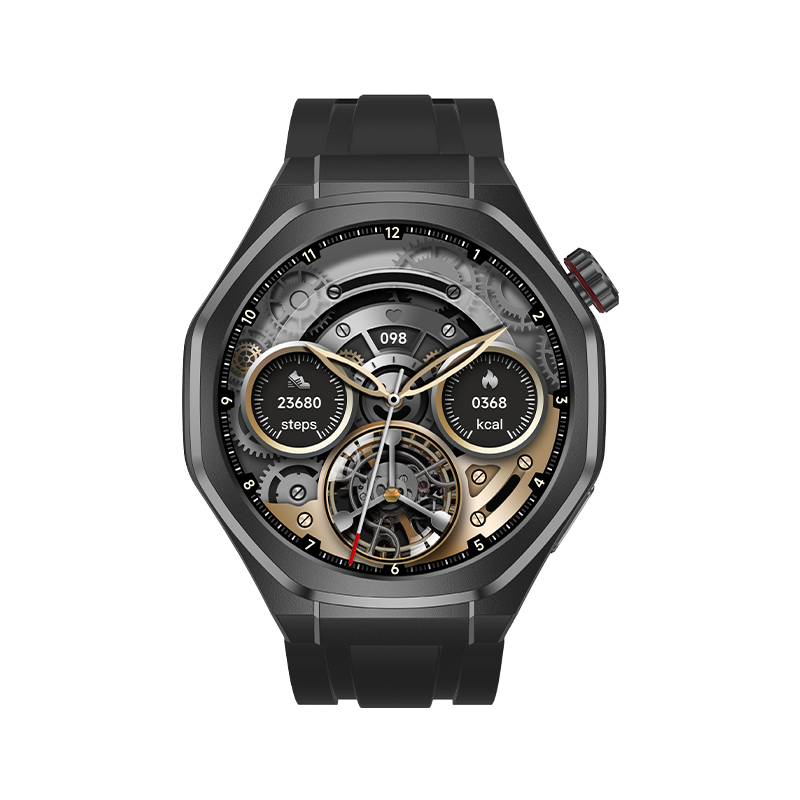How to achieve 24-hour health monitoring through smart bracelet?
Release Time : 2025-07-14
In modern fast-paced life, health management has become increasingly important. With the advancement of technology, smart bracelets, as a convenient wearable device, have become an indispensable part of many people's daily lives. It can not only help users record exercise data, but also provide comprehensive health monitoring functions to achieve all-weather health management.
1. Basic functions: comprehensive coverage of daily life
The basic functions of smart bracelets cover a variety of practical tools from compasses to breathing training, one of the most core functions of which is sleep detection. Sleep quality directly affects our physical and mental health. Smart bracelets can monitor the user's sleep status through built-in sensors, including the time distribution of light sleep, deep sleep and rapid eye movement (REM) stages, and generate detailed reports for users' reference. In addition, some high-end models also support automatic recognition of sleep time and wake-up time, and even provide suggestions for improving sleep quality. In addition to sleep monitoring, heart rate monitoring is also one of the important functions of smart bracelets. By monitoring heart rate changes in real time, users can understand their heart load under different activities. This is of great significance for preventing cardiovascular diseases and optimizing exercise plans. Some smart bracelets also have a blood oxygen saturation monitoring function, which is particularly important in high altitude areas or when in a confined space for a long time, because it can help users detect potential health problems in time. For female users, the female health detection function provided by smart bracelets is particularly considerate. It can record menstrual cycles, predict ovulation periods, and provide relevant health advice to help women better manage their physical health. In addition, considerate functions such as reminders to take medicine and drink water can also ensure that users complete daily health management tasks on time and develop good living habits.
2. Sports tracking and fitness guidance
Smart bracelets are not only a good helper for health monitoring, but also perform well in sports tracking. Whether running, cycling or swimming, smart bracelets can accurately record various sports data, such as steps, distance, calories consumed, etc. Through the built-in GPS module or connecting to a mobile phone to obtain positioning information, smart bracelets can also draw accurate sports trajectories, allowing users to see their sports routes at a glance. It is worth mentioning that many smart bracelets are equipped with professional sports modes, which can adjust algorithms according to different types of sports to provide more accurate data analysis. For example, in running mode, the bracelet will pay special attention to key indicators such as pace and cadence; while in swimming mode, it will focus on monitoring parameters such as swimming style and number of strokes. These detailed data can not only help users better understand their sports performance, but also provide a basis for formulating personalized training plans.
3. Personalized settings and convenient operation
In order to make the user experience more personalized, smart bracelets provide a wealth of setting options. Users can choose different dial styles according to their personal preferences and quickly access common functions through custom buttons. In addition, smart bracelets also support brightness adjustment and do not disturb mode to adapt to various environmental needs. For example, turning on the do not disturb mode when resting at night can avoid unnecessary disturbances and ensure high-quality sleep quality. In order to facilitate user operation, smart bracelets are usually designed with a simple and intuitive operation interface. Through simple sliding actions, users can quickly switch to commonly used widgets on the main interface, such as weather forecasts, calendars, etc. At the same time, with the help of voice assistants, users only need to speak commands to complete operations such as making calls and sending text messages, which greatly improves the convenience of use.
4. Reminder function: always care about your health
The reminder function of smart bracelets is undoubtedly one of its highlights. In addition to common alarms and schedule reminders, it can also issue specific reminders based on the user's health status. For example, when the user remains in the same posture for a long time, the bracelet will issue a sedentary reminder to encourage the user to get up and move around; and the reminder to take medicine ensures that the user does not forget to take medicine on time. For female users, the smart bracelet will also push corresponding health reminders according to the menstrual cycle to help them take better care of themselves. In addition, the smart bracelet can also receive various message notifications from the mobile phone, including calls, text messages, social media updates, etc., to ensure that users do not miss any important information. Even in busy work or study, you can keep abreast of the dynamics of the outside world at any time.
5. Data synchronization and cloud storage
In order to facilitate users to track their health data for a long time, smart bracelets usually support data synchronization with mobile phone applications. Through Bluetooth connection, all recorded data will be automatically uploaded to the cloud and displayed to users in the form of charts, making it easy to view historical trends. This seamless data synchronization mechanism not only improves the security and reliability of data, but also provides valuable reference for doctors, especially in the management of chronic diseases.
In short, with its rich functions and convenient operation methods, smart bracelets have become an ideal choice for modern people to achieve 24-hour health monitoring. Whether it is the little care in daily life or the precise guidance in professional sports, smart bracelets are silently guarding the health of every user.
1. Basic functions: comprehensive coverage of daily life
The basic functions of smart bracelets cover a variety of practical tools from compasses to breathing training, one of the most core functions of which is sleep detection. Sleep quality directly affects our physical and mental health. Smart bracelets can monitor the user's sleep status through built-in sensors, including the time distribution of light sleep, deep sleep and rapid eye movement (REM) stages, and generate detailed reports for users' reference. In addition, some high-end models also support automatic recognition of sleep time and wake-up time, and even provide suggestions for improving sleep quality. In addition to sleep monitoring, heart rate monitoring is also one of the important functions of smart bracelets. By monitoring heart rate changes in real time, users can understand their heart load under different activities. This is of great significance for preventing cardiovascular diseases and optimizing exercise plans. Some smart bracelets also have a blood oxygen saturation monitoring function, which is particularly important in high altitude areas or when in a confined space for a long time, because it can help users detect potential health problems in time. For female users, the female health detection function provided by smart bracelets is particularly considerate. It can record menstrual cycles, predict ovulation periods, and provide relevant health advice to help women better manage their physical health. In addition, considerate functions such as reminders to take medicine and drink water can also ensure that users complete daily health management tasks on time and develop good living habits.
2. Sports tracking and fitness guidance
Smart bracelets are not only a good helper for health monitoring, but also perform well in sports tracking. Whether running, cycling or swimming, smart bracelets can accurately record various sports data, such as steps, distance, calories consumed, etc. Through the built-in GPS module or connecting to a mobile phone to obtain positioning information, smart bracelets can also draw accurate sports trajectories, allowing users to see their sports routes at a glance. It is worth mentioning that many smart bracelets are equipped with professional sports modes, which can adjust algorithms according to different types of sports to provide more accurate data analysis. For example, in running mode, the bracelet will pay special attention to key indicators such as pace and cadence; while in swimming mode, it will focus on monitoring parameters such as swimming style and number of strokes. These detailed data can not only help users better understand their sports performance, but also provide a basis for formulating personalized training plans.
3. Personalized settings and convenient operation
In order to make the user experience more personalized, smart bracelets provide a wealth of setting options. Users can choose different dial styles according to their personal preferences and quickly access common functions through custom buttons. In addition, smart bracelets also support brightness adjustment and do not disturb mode to adapt to various environmental needs. For example, turning on the do not disturb mode when resting at night can avoid unnecessary disturbances and ensure high-quality sleep quality. In order to facilitate user operation, smart bracelets are usually designed with a simple and intuitive operation interface. Through simple sliding actions, users can quickly switch to commonly used widgets on the main interface, such as weather forecasts, calendars, etc. At the same time, with the help of voice assistants, users only need to speak commands to complete operations such as making calls and sending text messages, which greatly improves the convenience of use.
4. Reminder function: always care about your health
The reminder function of smart bracelets is undoubtedly one of its highlights. In addition to common alarms and schedule reminders, it can also issue specific reminders based on the user's health status. For example, when the user remains in the same posture for a long time, the bracelet will issue a sedentary reminder to encourage the user to get up and move around; and the reminder to take medicine ensures that the user does not forget to take medicine on time. For female users, the smart bracelet will also push corresponding health reminders according to the menstrual cycle to help them take better care of themselves. In addition, the smart bracelet can also receive various message notifications from the mobile phone, including calls, text messages, social media updates, etc., to ensure that users do not miss any important information. Even in busy work or study, you can keep abreast of the dynamics of the outside world at any time.
5. Data synchronization and cloud storage
In order to facilitate users to track their health data for a long time, smart bracelets usually support data synchronization with mobile phone applications. Through Bluetooth connection, all recorded data will be automatically uploaded to the cloud and displayed to users in the form of charts, making it easy to view historical trends. This seamless data synchronization mechanism not only improves the security and reliability of data, but also provides valuable reference for doctors, especially in the management of chronic diseases.
In short, with its rich functions and convenient operation methods, smart bracelets have become an ideal choice for modern people to achieve 24-hour health monitoring. Whether it is the little care in daily life or the precise guidance in professional sports, smart bracelets are silently guarding the health of every user.







